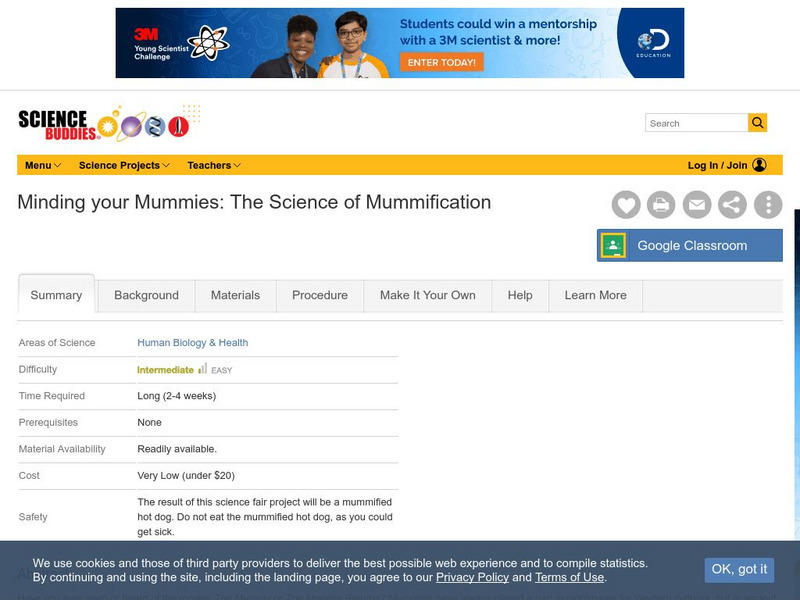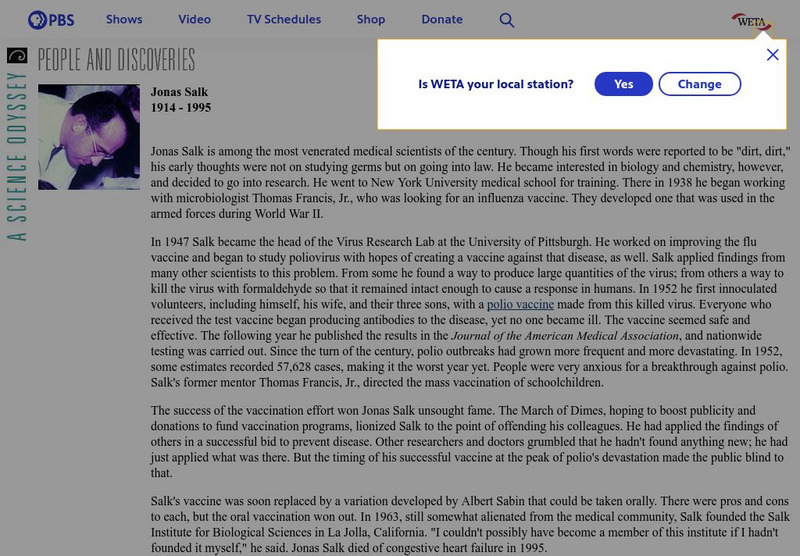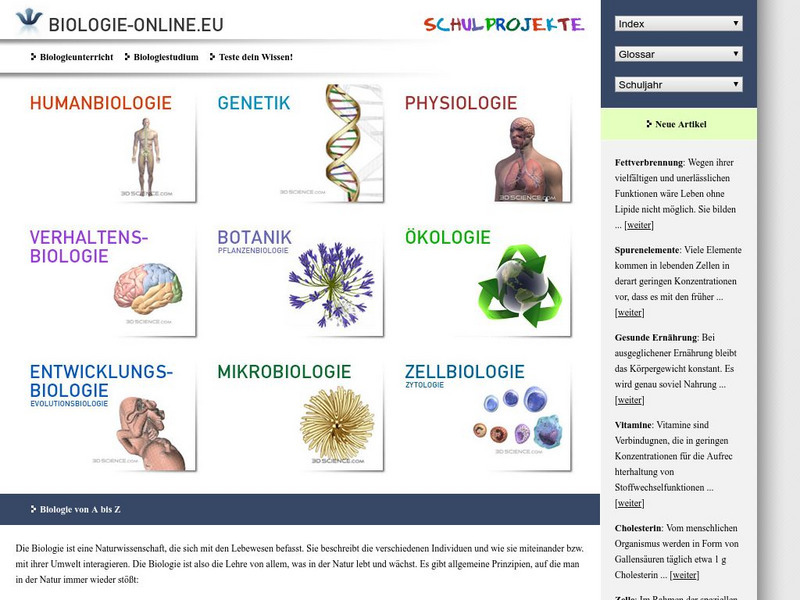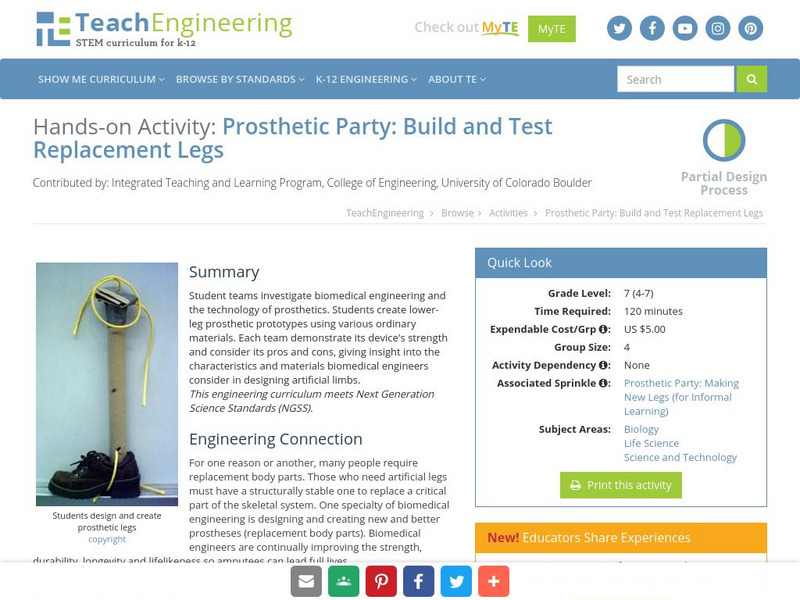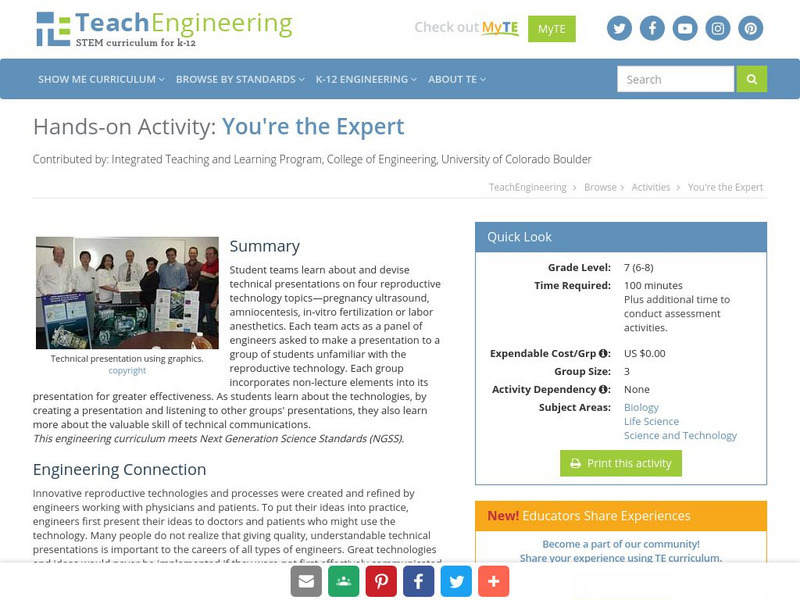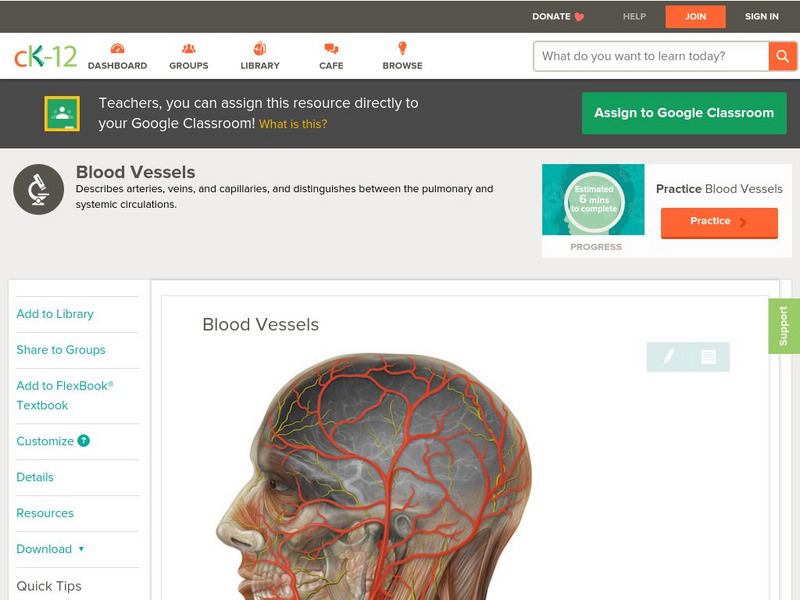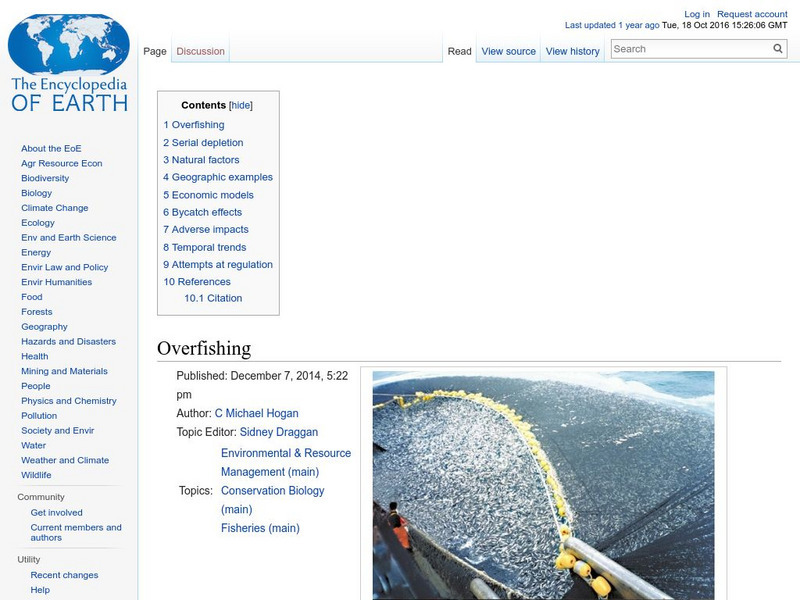Hi, what do you want to do?
Library of Congress
Loc: Everyday Mysteries: What Is the Strongest Muscle?
There are a variety of ways one can look at what might be the strongest muscle in the body. This site defines the various types of muscles and goes on to explain which would be considered the strongest.
TeachEngineering
Teach Engineering: Muscles, Oh My!
Students are introduced to how engineering closely relates to the field of biomechanics and how the muscular system produces human movement. They learn the importance of the muscular system in our daily lives, why it is important to be...
Science Buddies
Science Buddies: Minding Your Mummies: The Science of Mummification
Mummies have always played a part in nightmares for Western cultures, but in ancient Egypt, mummification was a serious religious ritual. They believed that preserving human remains was necessary so that the previous owner could enjoy...
National Institutes of Health
National Heart, Lung and Blood Institute: What Are the Lungs?
Find excellent information about the human lungs, and how they contribute to the gas exchange process for the body. Inside, find detailed illustrations and a short, narrated animation of the respiratory system at work.
PBS
Pbs Learning Media: Amazing Heart Facts
This feature from the NOVA: "Cut to the Heart" highlights facts about the heart, including its size and placement, and will help you to understand the importance of this wondrous organ in our bodies.
NASA
Nasa: The Brain in Space
This educators guide shows students how the body's brain, spinal cord and network of nerves control the activities of animals and humans.
CK-12 Foundation
Ck 12: Life Science: Excretion
[Free Registration/Login may be required to access all resource tools.] You might have noticed that sometimes your urine is darker than usual. This can happens when your body is low on water and trying to reduce the amount of water lost...
Internet History Sourcebooks Project
Fordham University: Modern History Sourcebook: Edward Jenner (1749 1823)
This site from the Modern History Sourcebook of the Fordham University provides a highly detailed biography of Edward Jenner (1749-1823 CE), noted physician and discoverer of the smallpox vaccine. Also presented are three original...
PBS
Pbs: Jonas Salk (1914 1995)
A Science Odyssey biography of Jonas Salk from PBS, noted medical scientist who discovered the vaccine for polio. Easy to read format with link to "Paralyzing Polio," a colorfully animated and interactive comic strip. Links also...
Other
Biologie Online: Biologie Von a Bis Z (German)
Biology is a natural science that deals with living things. Like other areas of science, biology is divided into several subcategories. See them here from A to Z.
CK-12 Foundation
Ck 12: Life Science for Middle School
This digital textbook covers core life science concepts and includes interactive features, real-world examples, and videos.
Enchanted Learning
Enchanted Learning: Skeletons and Bones at Enchanted Learning
In this Enchanted Learning site, teachers and students will find great skeleton crafts, activities, and printouts.
Other
Washington University: Hemoglobin and the Heme Group:
This site from the Department of Chemistry at the Washington University provides a deetailed study of the role of hemoglobin in blood physiology. The article is somewhat in-depth, complete with pictures, charts, and a bibliography.
TeachEngineering
Teach Engineering: Prosthetic Party
Student teams investigate biomedical engineering and the technology of prosthetics. Students create a model prosthetic lower leg using various materials. Each team demonstrate its prosthesis' strength and consider its pros and cons,...
TeachEngineering
Teach Engineering: You're the Expert
Student teams learn about and devise technical presentations on four reproductive technology topics pregnancy ultrasound, amniocentesis, in-vitro fertilization or labor anesthetics. Each team acts as a panel of engineers asked to make a...
TeachEngineering
Teach Engineering: Our Amazing Skeleton
This lesson covers the topic of human bones and joints. Students learn about the skeleton, the number of and types of bones in the body, and how outer space affects astronauts' bones. Students also learn how to take care of their bones...
CK-12 Foundation
Ck 12: Life Science: Blood Vessels
[Free Registration/Login may be required to access all resource tools.] The blood vessels are an important part of the cardiovascular system. They connect the heart to every cell in the body. Arteries carry blood away from the heart,...
Curated OER
Kids Health: Cystic Fibrosis
This article, written for younger readers, explains cystic fibrosis (CF), an inherited disease that causes the body to produce mucus that's extremely thick and sticky.
Countries and Their Cultures
Countries and Their Cultures: Mangbetu
The Mangbetu live in the northeastern corner of Zaire. They are the founders of one of the few centralized political systems in Central Africa. The Mangbetu achieved a very high level of technological and material development, as...
Khan Academy
Khan Academy: Q&a: Neuron Depolarization, Hyperpolarization, & Action Potentials
Khan Academy answers a question about hyperpolarization and depolarization with a written explanation and links to helpful videos.
PurposeGames
Purpose Games: Axial and Appendicular Skeleton Parts Quiz
41 question quiz relates to medical terms associated with the axial and appendicular skeleton.
Encyclopedia of Earth
Encyclopedia of Earth: Conservation Biology: Overfishing
Article describing the scope of the problem of overfishing in the ocean and in fresh water bodies around the world. Adverse effects of this practice on both natural and human systems, and efforts to contain it are detailed. (Published:...
Other popular searches
- Human Body Anatomy
- Human Body Anatomy Sketching
- Human Body Anatomy Diagrams
- Human Biology and Anatomy
- Human Body Anatomy Muscles
- Human Body Anatomy Game
- Human Brain Anatomy
- Human Body Anatomy Brain
- Human Body Anatomy Bones
- Human Heart Anatomy
- Human Body Anatomy Hearing
- Human Body Anatomy Veins







